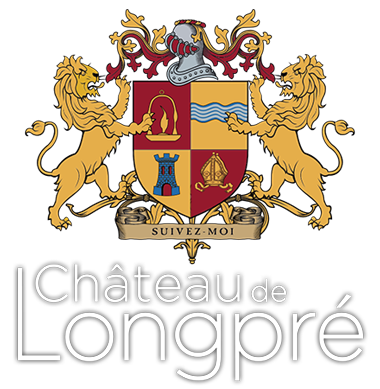L'esprit des lieux
l'histoire du Château de Longpré
Le Domaine de Longpré, une terre de Légende
Vous qui pénétrez sur les terres du château de Longpré, vous ignorez certainement que vous foulez une terre de légende ! À l’extrême fin du Ve siècle, le plateau sec et pierreux sur lequel s’élèvera bien plus tard le château de Longpré est le témoin privilégié d’un terrible martyr et d’un merveilleux miracle !
Là, en contrebas du lieu-dit oratori, sur les bords de l’Ariège, Volusien, évêque de Tours, est décapité par ses ravisseurs wisigoths qui souhaitent se débarrasser de leur prisonnier, avant de franchir les Pyrénées sous la pression des troupes de Clovis. On raconte que le corps et la tête du Saint supplicié sont abandonnés sur le lieu même du martyr et que les lances des soldats fichées en terre pendant l’exécution ont alors miraculeusement verdi pour devenir des frênes que la tradition déclare encore vivaces au XVe siècle.
La tradition rapporte encore que la nuit même du martyr, Saint Volusien (ou un ange) apparaît à deux religieuses du village de Saint-Jean-de-Verges pour leur révéler le lieu de sa décapitation et leur demander de faire transporter le corps et la tête dans l’église de Foix.
Depuis, Saint Volusien est le saint patron de la ville de Foix.
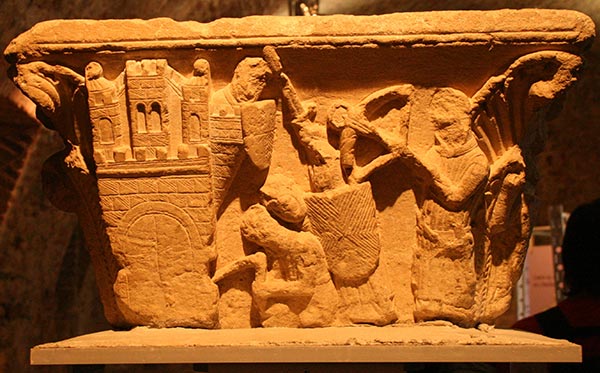
Martyr de Volusien - musée du château de Foix
Les charmes d’une maison de campagne
Il fallait que les terres originairement sanctifiées par le sacrifice d’un saint reviennent à la Foi ! D’un évêque l’autre… Monseigneur Henri-Gaston de Lévis-Léran, évêque de Pamiers de 1741 à 1787, succède à Saint Volusien, évêque de Tours, lorsqu’en 1756 il acquiert le domaine agricole de Longpré pour y faire élever, sur ses propres deniers, une maison de campagne. Peut-être aspirait-il à une résidence d’agrément, loin des tracas de son évêché et de la chaleur estivale de la ville de Pamiers… Notre évêque, issu de la branche cadette de l’illustre famille de Lévis, fait appel aux services d’un architecte de renom parisien, Jean-Baptiste Chaussard. Ainsi, voit-on se dresser, en 1760, sur la terrasse des Graousses, entre la chaîne des Pyrénées et la rivière Ariège, une maison de campagne charmante et confortable, conçue par un architecte parisien pour un propriétaire volontiers qualifié de pieux et mondain.

Le Château et son ancienne tour (carte postale Labouche, début XXème siècle)
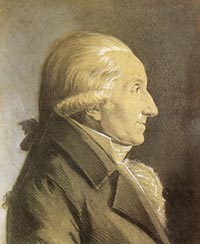 Cette ancienne bâtisse aux murs très épais, nous pourrions dire qu’elle existe encore, quoique englobée dans le château actuel. Sachez que lorsque vous pénétrez dans la bibliothèque, les cuisines ou la salle à manger actuels, vous marchez sur l’ancien tracé de la demeure épiscopale. En contrebas du domaine de Longpré, Jean-Baptiste Chaussard, également réputé pour ses jardins, crée un jardin à la française de facture simplifiée, traversé par un chemin conduisant droit à l’Ariège et à un bac. Si de nos jours un jardin à la française existe aux abords du château, c’est pour rappeler et honorer les origines du château de Longpré.
Cette ancienne bâtisse aux murs très épais, nous pourrions dire qu’elle existe encore, quoique englobée dans le château actuel. Sachez que lorsque vous pénétrez dans la bibliothèque, les cuisines ou la salle à manger actuels, vous marchez sur l’ancien tracé de la demeure épiscopale. En contrebas du domaine de Longpré, Jean-Baptiste Chaussard, également réputé pour ses jardins, crée un jardin à la française de facture simplifiée, traversé par un chemin conduisant droit à l’Ariège et à un bac. Si de nos jours un jardin à la française existe aux abords du château, c’est pour rappeler et honorer les origines du château de Longpré.
À cette demeure du XVIIIe siècle il est fait allusion dans un des vingt livres pyrénéistes les plus rares : dans sa Description des gîtes de minerai, des forges et des salines des Pyrénées […] le baron Dietrich souligne, en 1786, l’abondance des « pailloles » (ou paillettes d’or) dans les méandres de l’Ariège qui bordent le domaine et la maison de l’évêque de Pamiers.
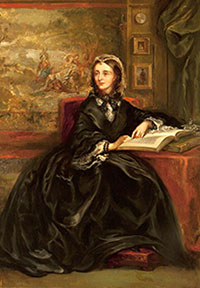
Long Pré ? So British !
« Long Pré- Here I am at a comfortable table at M. St. J—‘s, about to occupy myself with a record of our proceedings since we left Ax, until the servant arrives to occupy the table with our first breakfast. »
(« Long Pré – Je suis actuellement confortablement installée à la table de M. St. J--, occupée à rédiger un compte rendu des événements depuis notre départ d’Ax jusqu’à ce que survienne la servante avec notre premier petit déjeuner. »
Extrait de : The Pyrenees, with excursions into Spain (T. II), Lady Chatterton, 1843, p. 277.)
Comment se fait-il que nous trouvions plusieurs mentions du château de Longpré et de leurs propriétaires d’alors, le vicomte et la vicomtesse de Satgé Saint Jean, dans le récit de voyage d’une aristocrate anglaise du XIXe siècle, quelque peu célèbre en son pays pour ses récits, croquis et poèmes ?
L’époque romantique voit naître une mode toute britannique, le tourisme pyrénéen : le thermalisme et ses mondanités ainsi que le goût pour les excursions précipitent dans les montagnes du Sud-Ouest nombre de privilégiés d’Outre-Manche, assoiffés d’espace et de découverte.
En 1841, carnets et crayons à la main, lady Chatterton cède à cet engouement et, sur l’invitation de la vicomtesse de Satgé, sa compatriote, quitte le traditionnel circuit des stations thermales pyrénéennes pour séjourner une semaine à « Long Pré » (sic).
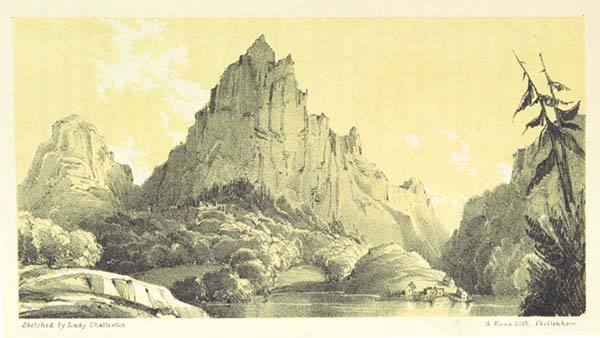
Croquis de lady Chatterton
Son hôte, Madame de Satgé, née Harriet Rowley, est la fille fortunée d’un pair d’Irlande et d’une petite cousine du duc de Wellington. Elle a acquis le domaine un an plus tôt et l’a transformé : la nouvelle demeure, qui englobe dans sa partie occidentale la demeure épiscopale d’origine, est désormais rectangulaire et de facture classique ; sa surface habitable a doublé (ou presque). Deux jardins à l’anglaise, dont lady Chatterton a loué la beauté dans son récit de voyage, l’agrémentent : le château de Longpré devient un lieu de plaisante villégiature. Se souviennent de ce temps le blason et la devise « Suivez-moi » de la famille de Satgé qui ornent la façade nord du château, l’escalier, fort élégant, qui accueille le visiteur ainsi que les deux charmants salons – l’un orienté à l’est, illuminé par la claire lumière du matin et l’autre, orienté au sud, ouvert sur la chaîne des Pyrénées.
Un maréchal de France à Longpré
Transformations, aménagements et hospitalité conduisent inexorablement à la vente du domaine et du château. En 1843 Emmanuel-Fortuné de Roux, marquis de Puivert, en est le nouvel acquéreur. Une recension des biens à la mort de ce dernier nous fera découvrir avec ravissement que le château recelait en 1869 une bibliothèque d’environ 631 volumes (aujourd’hui dispersée). Qu’à cela ne tienne ! Les propriétaires actuels renoueront avec ce passé et créeront, à leur tour, une bibliothèque désormais consacrée aux Pyrénées.
Longpré, qui reste propriété de descendants de la famille de Roux jusqu’en 1972, s’engourdit peu à peu : le château n’est plus guère habité et les terres, peu entretenues, sont progressivement vendues.
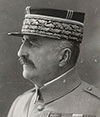
Toutefois, en juin 1940, un hôte prestigieux y trouve refuge, le maréchal de France Louis-François Franchet d’Espèrey. Le grand vainqueur des Balkans, titulaire de la médaille militaire et de la Grand-Croix de la légion d’honneur, élu académicien en 1934 au fauteuil du maréchal Lyautey, se replie en Ariège lorsque le maréchal Pétain remet le destin de la France entre les mains des Allemands. Le château de Longpré devient sa tanière militaire pour quelques mois avant qu’il ne s’établisse à Albi avec sa famille pour affronter l’hiver.
Aujourd'hui
Depuis 2016, le domaine de Longpré est devenu propriété de Leatitia et Lilian CANTOS.
Leur audace? Faire de cette demeure un château luxueux, chaleureux, mais aussi familial, fidèle à son histoire, un lieu idyllique qui s'oriente vers l'évènementiel privé et professionnel.
